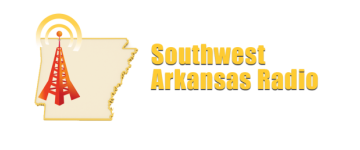State Capitol Week in Review
The legislature passed legislation to save Arkansas families about $100 million a year in lower income taxes. The bill also lowers corporate income taxes and will save Arkansas businesses about $24 million a year.
Senate Bill 549 lowers the top rate for individual income taxes from 4.9 percent to 4.7 percent. It will benefit about 1.1 million Arkansas taxpayers whose annual income is more than $24,300. The lower rate takes effect in tax year 2023, and state revenue officials expect employers to adjust withholding for their workers later this year.
The bill lowers the top rate for businesses from 5.3 percent to 5.1 percent.
Passage of the tax cut bill gives legislators a more definite estimate of state revenue for next fiscal year. At the same time, lawmakers are finalizing spending requests from state agencies for next year. One of the final last pieces of legislation to be considered this session will be a balanced budget bill.
The Arkansas balanced budget law is known as the Revenue Stabilization Act. For next fiscal year it projects total general revenue spending of about $6.2 billion. There are three major sources of general revenue in Arkansas – the sales tax, the individual income tax and the corporate income tax.
The largest single spending category in the Revenue Stabilization Act is the Public School Fund, from which state aid is distributed to school districts for K-12 education. The Public School Fund, which includes funding of career and technical education, will amount to $2.4 billion next fiscal year.
Divisions of the Human Services Department (DHS) will spend about $1.8 billion in state general revenue. However, total spending levels for DHS will be much greater because the department also receives federal matching funds that are not counted in state general revenue.
Traditionally the state provides about 30 percent of Medicaid spending and federal funding provides the rest.
State prisons and its related agencies will receive a significant increase in state funding, so that tougher sentencing laws can be effective. The Division of Correction will receive and spend about $379 million this year and will get an estimated $434 million next year. The Division operates state prisons.
The Division of Community Correction operates specialty courts, such as drug courts, and re-entry programs that help inmates transition into society. It also hires parole officers to supervise inmates who have been released early, before their sentence has been completed. The Division’s budget will increase from $98 million this year to $105 million next year.
State reimbursements to county jails represent another major cost of the prison system. Due to a lack of space in state prison units, as many as 2,000 inmates a day are housed in county jails, and the state reimburses county governments for the expenses incurred.
Legislators are working on a major criminal justice package, among other reasons, to reduce the backlog of inmates in county jails. County sheriffs have told lawmakers that there are so many serious offenders in county lockups, they present a danger to staff and to people in jail for relatively minor offenses.
Highway and transportation is not included in the Revenue and Stabilization Act, because it is not funded from general revenue. Highway construction is paid mostly from special revenue such as motor fuels taxes, which are collected at the pump.


